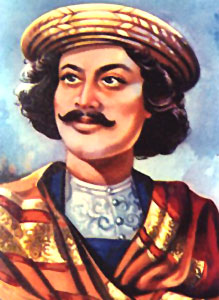 The socio-religious movements in Bengal during the British period are considered some of the most important and influential events in the history of India. Most of the socio-religious movements in Bengal were led by the English educated Indian elite people clustered in Calcutta. They mostly opposed the evil rituals practised in Hinduism and other religions and tried to eliminate the malevolent rituals to offer religion the desired contour. The major socio-religious movements in Bengal related to Hinduism included the Brahmo Samaj movement, Arya Samaj movement, Ramkrishna Mission, Theosophical movement, etc. On the other hand, the religious movements relating to Islam included the Ahmadiyya movement, Faraizi movement, etc.
The socio-religious movements in Bengal during the British period are considered some of the most important and influential events in the history of India. Most of the socio-religious movements in Bengal were led by the English educated Indian elite people clustered in Calcutta. They mostly opposed the evil rituals practised in Hinduism and other religions and tried to eliminate the malevolent rituals to offer religion the desired contour. The major socio-religious movements in Bengal related to Hinduism included the Brahmo Samaj movement, Arya Samaj movement, Ramkrishna Mission, Theosophical movement, etc. On the other hand, the religious movements relating to Islam included the Ahmadiyya movement, Faraizi movement, etc.
The Brahmo Samaj movement was one of the most prominent socio-religious movements in Bengal during the British period. The movement was led by the eminent educationalist and social reformer, Raja Ram Mohan Roy, who strongly opposed the evil rituals of Hinduism like Sati. He also propagated the idea of worshipping only one God, who is omnipresent. He also denied worshiping the God under any name or designation or title. The Arya Samaj movement was another prominent socio-religious movement in Bengal. This movement was started and led by Dayananda Saraswati and one of the most important features of this movement was the Shuddhi movement. This was a ritual developed by the Aryas to readmit the lower caste Hindus, who were converted into Islam or Christianity. The Arya Samaj also actively opposed the evil rituals that were practised in Hinduism and supported the cause of women education. The Samaj established educational institutions for providing education to the women at various levels as well.
Ramkrishna Mission played am important part in the socio religious movement in Bengal. The Mission was established by Swami Vivekananda, who followed and publicised the visions and ideas of Ramkrishna Paramhansha Dev. Vivekananda emphasised mainly on social service and on fulfillment and reorientation of Ramakrishna`s wishes. He was true to the traditions of Hinduism and established the Ramkrishna Math that still works for serving the humanity. The Theosophical movement was also an important socio-religious movement in Bengal during the British period. The movement was mainly inspired from outside India and was politically ambiguous.
There were also a few socio-religious movements in Bengal during the British period, which dealt with the problems of Islam. The Socio-religious movements among Bengali Muslims drew upon the dynamics of that society for their motivation. The Ahmadiyya movement and Faraizi movement were the two most influential movements among the Islam-related religious movements. The Ahmadiyya movement was formed in Punjab and was started by Mirza Ghulam Ahmad. He started to proclaim a mission as Masih Maw`ud (promised Messiah), Mtgaddid (restorer) and Mahdi (guide) and he also endowed himself with powers of prophet hood. He directed his campaign against some well-known Sunni Ulama of the Deoband and Ahl-i Hadith movements that were increasingly influential among Sunnis in the region. He also opposed the increasing influence of the Christian missionaries in the region. The supporters of Ahmadiyya movement described them as a distinct religious community and also claimed that they were the only upholders of `true Islam`.
The Faraizi movement was a prominent religious reform movement and was founded by Haji Shariatullah during the nineteenth century. The Faraizis were those who had the only objective of implementing and imposing the mandatory religious duties ordained by Allah. Hazi Shariatullah believed that the Faraizis should imply to assimilate every religious duty ordained by the Holy Quran and also by the Sunnah of the Prophet. Besides Hazi Shariatullah, Dudu Miyan and Naya Miyan were the two other prominent leaders of the Faraizi movement.
The socio religious movements made huge impacts on the Indian society and also became successful to eradicate some of the evil rituals that were practised in various religions during that period. The movements were also an integral part of Bengal renaissance during the eighteenth and nineteenth century.



















